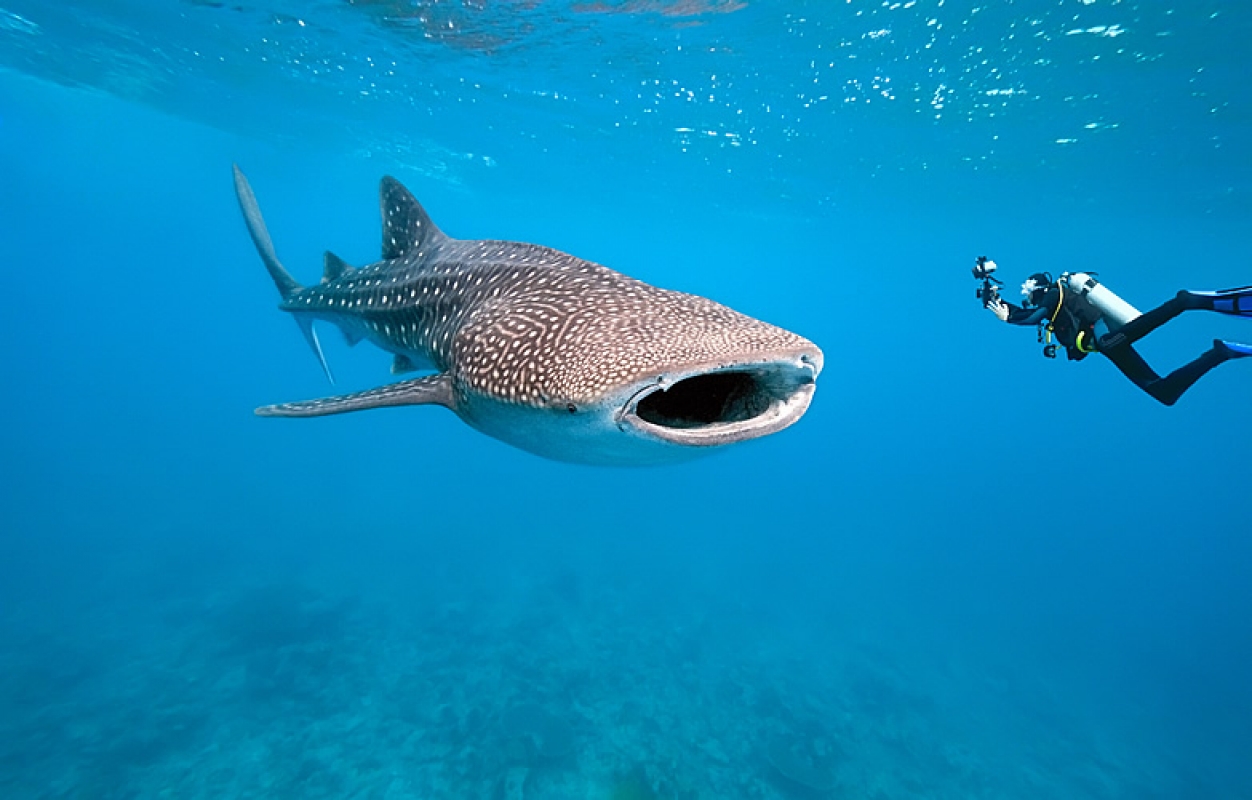

SWIM WITH THE WHALE SHARKS
Reaching lengths of nearly 13 meters, or 42.6 feet (the largest confirmed report pegged this fish at 12.65 meters, or 41.5 feet, but unconfirmed reports state larger numbers), the whale shark is unarguably the largest existing fish in the world.
Despite their size, though, humans have nothing to fear from them, as these gentle giants are filter feeders who eat mostly just planktons. At most, they have been seen to eat small fish and fish eggs – but certainly nothing half as large as a human being.
Every year, from October to January, schools of whale sharks come in droves to Djibouti’s bay of Tadjoura, to feast on the planktons there.
So if you want to meet them up close and personal, simply come to Djibouti in these months and bring your snorkel with you. You do not need to go scuba diving to see them because they often stay near the surface to feed.
GO SNORKELING
Djibouti is one of these very few places. With its excellent reefs being so close to the shore, you don’t need to carry a full scuba gear and squeeze yourself into a diving suit to view the corals and plethora of fish; just pop on a snorkel and mask and you’re off!
And what can you see once you’re there? You can see fish as big as you are – though those will probably swim quickly away when they notice you around. There are also a good number of smaller fish, and tourists who have snorkeled in Djibouti report that these smaller fish tend to stay closer to people, that is, they don’t run away like the big fish do, for some reason.
Speaking of big fish, there is one that you could see in Djibouti that probably won’t run away. It’s the biggest fish of all – the whale shark. That’s something you probably won’t see if you snorkel anywhere else.
VISIT THE ANIMAL REFUGE
Just 20 minutes away from the City of Djibouti, you can find the Discover and Aid Nature (Decouvrir et Aider la Nature; DECAN) animal refuge, where wild animals rescued from illegal human custody are kept, protected, and cared for.
Here you will find cheetahs, ostriches, turtles, hyenas, gazelles, antelopes, zebras, caracals, and others.
Most of the animals here arrived when they were still babies, so they have grown pretty used to humans, and some of them have grown quite tame.
GO BIRD WATCHING
Although the forest landscape occupies less than 1% of Djibouti’s entire territory, you can still find a lot of interesting birds to see here.
First on our list is Lac Abbe, which, though desolate-looking, is in fact the home of hordes of large pink flamingos.
If you wish to see more bird species, visit the Day Forest National Park, which harbors the endangered Djibouti Francolin, and the Obock region, where large bird migrations are seen.
All in all, there are 360 bird species to be found in the country.
If you wish to go bird watching in Djibouti, you could contact a bird-watching guide, who can bring you to the best bird-watching places and tell you more about the birds you are looking at. Some of them even offer their services for free, simply because bird watching is their passion.
Should you be fortunate enough to be accompanied by one of these volunteers, it is common courtesy to pay for the fuel of the vehicle you will be using, provide lunch, and offer a small gift to your host afterward